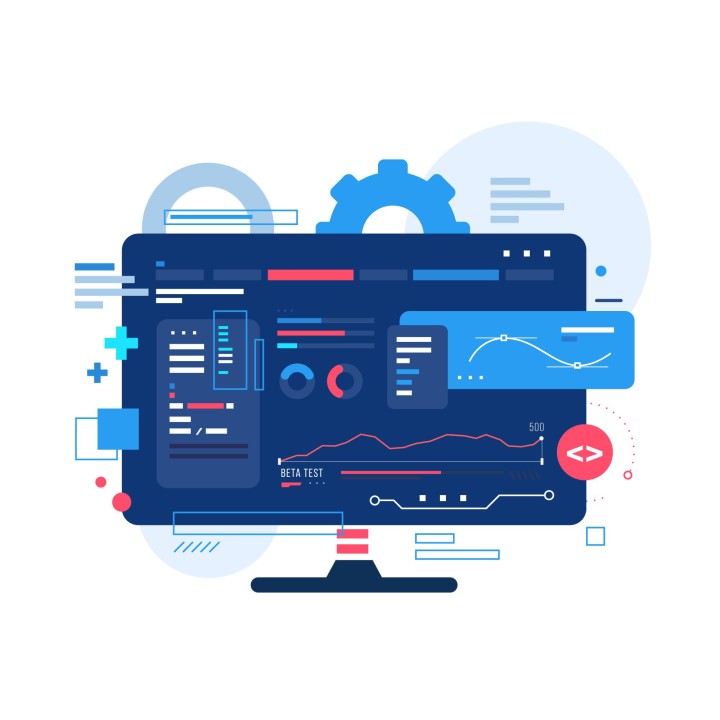Latest React Trends and Features in 2025
As we are moving forward in 2025. React continues to dominate the frontend development, evolving with innovative features and methodologies that push the boundaries of web application capabilities. Since its introduction by Facebook in 2013, React has consistently transformed how developers approach UI construction, and this year is no exception. This framework has a component-based architecture, virtual DOM, and unidirectional data flow remains at its core. And the new capabilities of React have appeared to address application development challenges. For React developers and businesses wanting to stay competitive in today’s rapidly changing digital environment, understanding these trends and features isn’t just beneficial—it’s essential.
This blog explores React trends, new features, and development that are shaping the future of web applications and delivering exceptional user experiences across platforms.
Latest Trends in React Development
The React ecosystem continues to rapidly evolve, with several notable trends reshaping how developers build web applications in 2025.
Server Components and Streaming
React Server Components have transformed the development landscape, allowing components to execute on the server while streaming results to clients. This architecture has improved core web vitals metrics by 30-40% in many applications, particularly Time to Interactive and First Contentful Paint. The ability to process data-heavy operations server-side while maintaining React’s component philosophy provides unprecedented flexibility for modern applications.
AI Integration Frameworks
Purpose-built React hooks and components for interacting with language models, image generation services, and other AI technologies have emerged as essential tools. Libraries like react-ai-hooks and ai-components have seen massive adoption rates, simplifying the integration of sophisticated AI functionalities with minimal boilerplate code. Such tools allow developers to focus on creating value rather than wrestling with complex AI implementations.
Custom Web Development
There is a rise in custom React web development services in 2025. And the organizations are increasingly seeking a specialized React architecture tailored to the specific business needs rather than adapting usual templates. This trend has been a domain-specific component library and application frameworks that have been optimised for different industries. Businesses benefit from solutions that precisely match their workflows rather than forcing their operations to fit standardized approaches.
Evolving State Management
While Redux maintains its position in complex applications, lightweight alternatives like Jotai and Zustand have captured significant market share due to their minimal API surface and excellent performance. React’s native hooks have also received enhancements, providing more capabilities without external dependencies. Many teams are adopting hybrid approaches, using React’s built-in state management for component-local concerns while employing specialized libraries for global application state.
Advanced TypeScript Integration
Typescript has become a universal tool in professional React development with a strong community. It has established strong conventions around prop typing, hook return, values, and context providers. The typescript compiler has introduced a React-specific optimization that improves the type checking performance in a large codebase. This integration has reduced runtime errors while improving React.js developers’ productivity through enhanced autocomplete and refactoring capabilities.
Key Features: Enhancing React Development
Concurrent Rendering
Concurrent rendering mode in React is fully stable, which represents one of the most important architectural advances in React’s history. This feature of React allows us to prepare multiple versions of UI simultaneously without blocking the main thread, resulting in a highly responsive interface that is used even during complex updates. React developers can prioritize urgent updates like user input while postponing less critical rendering work.
Suspense for Data Fetching
Suspense has evolved beyond code-splitting to become a comprehensive solution for handling asynchronous operations throughout React applications. The ability to declaratively specify loading states has simplified code that was earlier required to use complex combinations of conditional rendering and state variables. Integration with data fetching libraries is now seamless, with React Query, SWR, and Apollo all providing first-class Suspense support.
Hiring ReactJS Developer
There is a trend going on to hire dedicated ReactJS developers, which has grown as businesses recognise the value of specialists who can use React’s advanced features. These React.js developers bring expertise in optimising component hierarchies, implementing state management strategies, and developing testing approaches, along with building a scalable design system. Their specialized knowledge allows businesses to fully rely on React’s capabilities while at the same time avoiding pitfalls that lead to performance and maintenance issues.
Automatic Runtime Optimization
It has now included a compiler and runtime environment optimization that automatically identifies opportunities for performance improvement without requiring manual intervention. These include automatic memorization of stable component trees, intelligent batching of state updates, and reconciliation algorithms that reduce unnecessary DOM operations. This will allow React developers to focus on business logic rather than performance tuning.
React Developer Tools
React developer tools have expanded considerably by providing deeper information about component rendering behaviour and performance bottlenecks. React applications have become more straightforward. Because of the ability to track components, analyze prop changes, and profile performance, it reduces the time of React developers spend on debugging the issues
Conclusion
As we’ve explored throughout this article, React continues to evolve in ways that enhance both developer experience and end-user satisfaction.
The framework commits to performance optimization, improved rendering strategies, and simplified state management, which is why it remains the preferred choice for modern web application development. Businesses that utilise these advanced competitive advantages through faster development cycles, better performance metrics, and a more responsive user interface.
For all the organizations that wish to take advantage of these innovations, they must consider working with a React.js development service, which has increasingly become important. These specialized services bring not only technical expertise but also strategic insights into how React’s capabilities can be tailored to specific business objectives. As React continues to mature, we can expect it to further consolidate its position as the leading framework for building sophisticated web applications that meet the demands of today’s digital world.
If you wish to migrate an existing application to React or develop a new application, this framework’s features and wide community support make it a perfect investment for future-proof development. By adopting these trends and features shown in this blog, React developers and businesses can harness the full potential of what React has to offer.
















